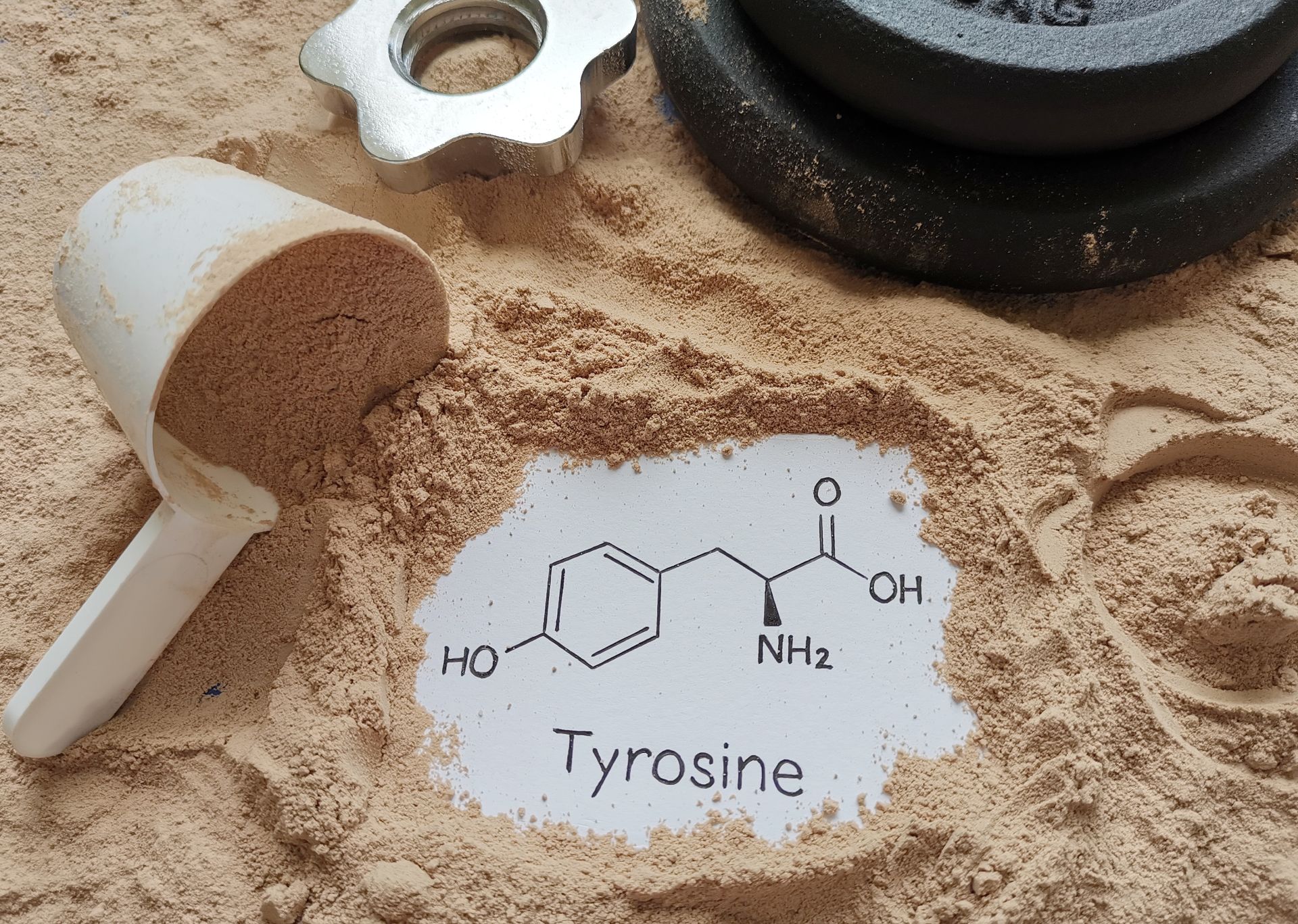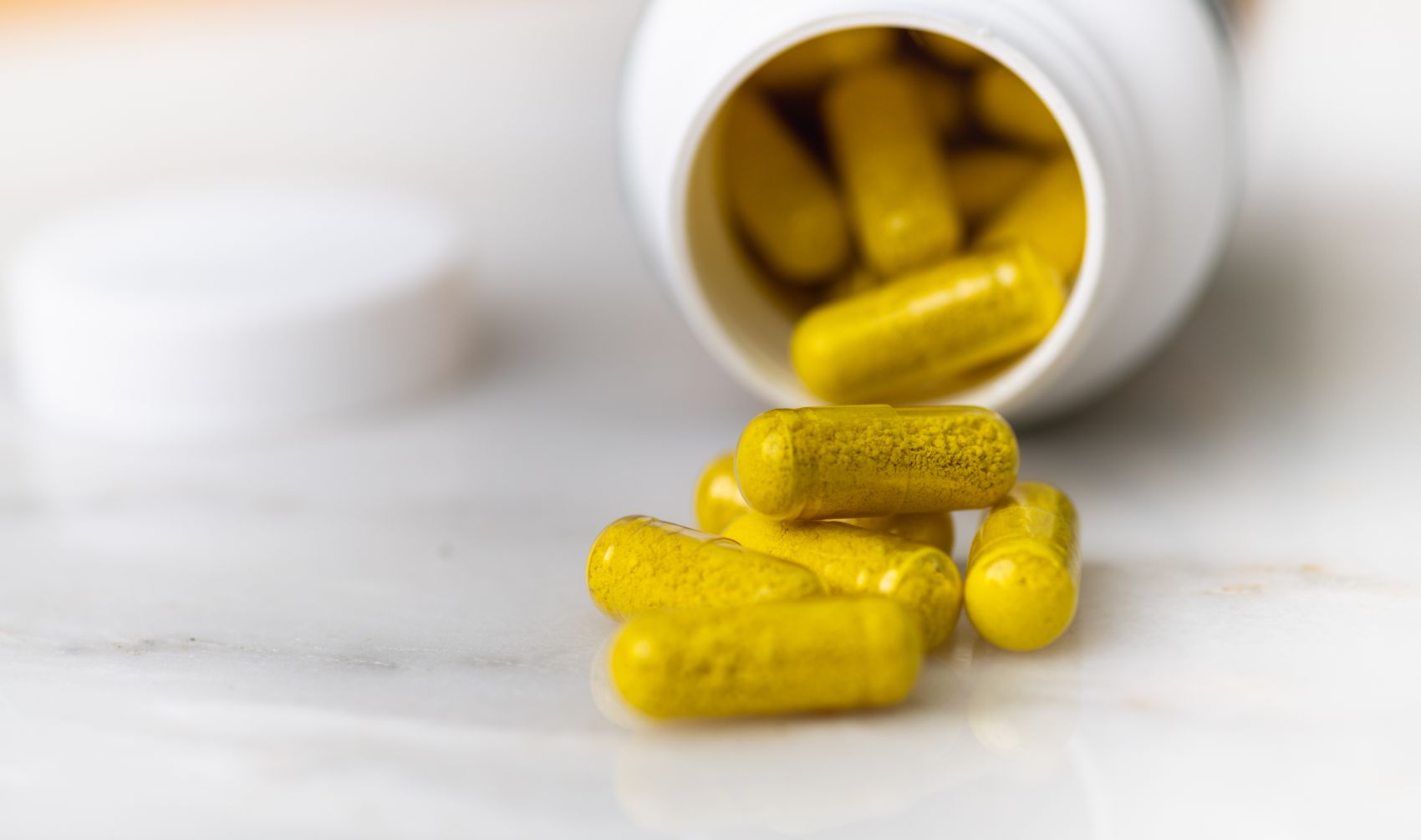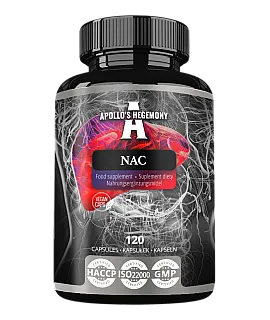NAC (N-acetylcysteine) supplement - health properties and dosage.
 – wlasciwosci zdrowotne i dawkowanie.jpg)
Fortunately, awareness of the momentous role of the liver with our body is very high. Supporting the work of the liver is one of the most common elements of caring for health. This is indicated by the great popularity of all detoxification programs, juice diets and liver supplements. In the context of the latter, NAC is one of the most lauded dietary supplements to support liver health, while bringing many other benefits to overall health.
- NAC - a supplement with comprehensive effects
- NAC's impact on liver health
- Will it help with the common cold?
- Additional health benefits
- NAC dosage
- Side effects and contraindications
NAC - a supplement with comprehensive effects
NAC (N-AcetylCysteine) is the acetylated form of the amino acid cysteine. It has a wide range of applications both in medicine and in preventive supplementation. One of its primary properties is its antioxidant action. And this action occurs in two ways - indirectly and directly. NAC itself is an antioxidant due to the presence of sulfhydryl groups, which allow it to inactivate free radicals - this is a direct action. Indirectly, on the other hand, it works by stimulating the production of glutathione, which is the most important endogenous antioxidant in the body.
It is a very safe and readily available substance that has long had medical applications. Acetylcysteine was patented in 1960 and entered medical use in 1967.
NAC's impact on liver health
This impact is very large. By supplying the body with cysteine in acetylated form, we enhance the production of glutathione (GSH), which is our main endogenous antioxidant. Thus, detoxification processes are promoted and oxidative stress control is improved by reducing free radicals. There are even reports in the literature about the cytoprotective role of NAC in relation to liver cancer.
Evidence from experimental studies on patients with non-alcoholic fatty liver disease (NAFLD) has shown that NAC blocks lipid accumulation in the liver and reduces pro-inflammatory markers such as IL-6 and IL-1β, TNF-α and NF-κB. Another study on NAFLD using NAC at 600 mg twice a day for 3 months showed that NAC treatment resulted in reduced alanine transaminase (ALAT) levels and spleen size in the NAC treatment group compared to patients receiving vitamin C.
Large doses of acetylcysteine (8,000 mg per day) were used for chronic hepatitis B. Such supplementation was able to lower total bilirubin and aminotransferases and increase prothrombin activity in patients.
NAC is often included in complex liver support supplements. Examples include:
- HealthLabs Care DetoxMe
- NOW Foods Liver Refresh
- Norsa Pharma Hepaset Pro
- MyLabs My Pro Detox
Overall, for multi-track liver support, it is very common to combine NAC with silymarin from milk thistle and artichoke extract.
Rescue for Paracetamol poisoning
Acetylcysteine, due to its ability to directly bind toxic metabolites of acetaminophen (the active ingredient in Paracetamol) and stimulate glutathione synthesis, is used on an outpatient basis in cases of its overdose and protects against toxic liver damage.
The use of acetylcysteine for this purpose was described as early as 1977 and more widely introduced in 1980, so it is a practice with a long history.
Will it help with the common cold?
Acetylcysteine has a mucolytic effect. What does this mean? Well, it can dilute secretions in the upper respiratory tract. When a lot of secretions accumulate in the course of an illness, NAC can reduce their viscosity and liquefy them, making them easier to drain and expectorate. In addition, it supports the function of the airway epithelium. For this reason, doctors often recommend over-the-counter medications with acetylcysteine for upper respiratory tract infections. However, if you are caught with a cold, and you happen to have a NAC supplement at home, it is a good idea to use it.
Going into detail, the action of NAC on the structure of mucus is direct in nature and involves breaking disulfide bonds that stabilize mucus.
Thanks to the above actions, acetylcysteine is used by doctors not only for minor colds, but also for acute and chronic bronchitis and cystic fibrosis. One meta-analysis looked at the use of NAC in cases of chronic bronchitis and COPD, and found significantly fewer exacerbations in the acetylcysteine group than in the placebo group.
In addition to inhibiting symptoms, it appears that NAC also has the potential to reduce their risk. A double-blind, randomized clinical trial was conducted in which 262 patients were given 600 mg of NAC or placebo for 6 months (in winter) to determine the effect of long-term use of this supplement on the occurrence and course of influenza. This study showed that only 25% of patients infected with the influenza virus in the NAC group had symptoms of illness compared to 79% of patients in the placebo group. There was a significant decrease in flu-like episodes, severity and length of time in bed, and a sharp reduction in both local and systemic symptoms in the NAC group. It was concluded that replication of seasonal human influenza A viruses is inhibited by NAC along with inhibition of virus-induced pro-inflammatory responses.

Additional health benefits
NAC reduces oxidative stress, inhibits inflammation and dilutes mucous secretions, a very versatile combination of properties. With this profile of actions, it can be helpful for a wide range of health ailments, and is also a valuable part of preventive care.
In addition to liver and upper respiratory health, studies have tested NAC's effectiveness in cases of:
- polycystic ovary syndrome (PCOS),
- preventing recurrent miscarriages,
- lowering the risk of Alzheimer's and Parkinson's diseases,
- ulcerative colitis,
- diabetic neuropathy,
- male infertility.
In the above cases, either NAC alone was used, or it was used as an adjunct to standard treatment to increase its effectiveness.
NAC dosage
In supplementation, 500-2500 mg of NAC per day is most commonly used. At the upper end of this range, the dose is divided into 2-3 servings per day.
When using acetylcysteine for a medical condition, it is necessary to follow the doctor's instructions. Medicinal products with acetylcysteine for adults have 200 or 600 mg per serving.
NAC supplements are usually in capsule form. This substance inherently has an unpleasant odor and taste, so powders and uncoated tablets are either uncomfortable to use or have a lot of additives that mask these unpleasant properties.
Side effects and contraindications
Most often, NAC does not cause any side effects. If any do occur, they can be headache, diarrhea or nausea. It is always a good idea to check your individual sensitivity at the beginning of supplementation, starting with the minimum possible dose and increasing it only after confirming good tolerance.
Oral intake generally produces far fewer side effects than treatment with intravenous administration.
Due to the potential for mucosal irritation, relative contraindications to acetylcysteine use include gastric ulcer disease, duodenal ulcers, esophageal varices, bronchial hyperresponsiveness and asthmatic conditions.
Sources:
-
Mokhtari V, Afsharian P, Shahhoseini M, Kalantar SM, Moini A. A Review on Various Uses of N-Acetyl Cysteine. Cell J. 2017 Apr-Jun;19(1):11-17. doi: 10.22074/cellj.2016.4872. epub 2016 Dec 21. PMID: 28367412; PMCID: PMC5241507.
-
Katarzyna Antówka-Kata et al. "The place of mucolytic drugs in the treatment of upper respiratory tract disorders" Forum of Family Medicine 2010, Vol. 4, No. 1, 59-64.
-
Schwalfenberg GK. N-Acetylcysteine: A Review of Clinical Usefulness (an Old Drug with New Tricks). J Nutr Metab. 2021 Jun 9;2021:9949453. doi: 10.1155/2021/9949453. PMID: 34221501; PMCID: PMC8211525.
-
Tenório MCDS, Graciliano NG, Moura FA, Oliveira ACM, Goulart MOF. N-Acetylcysteine (NAC): Impacts on Human Health. Antioxidants (Basel). 2021;10(6):967. Published 2021 Jun 16. doi:10.3390/antiox10060967
 ⮜ Previous article
⮜ Previous article
Tyrosine - what is it and what properties does it have?
 Next article ⮞
Next article ⮞


